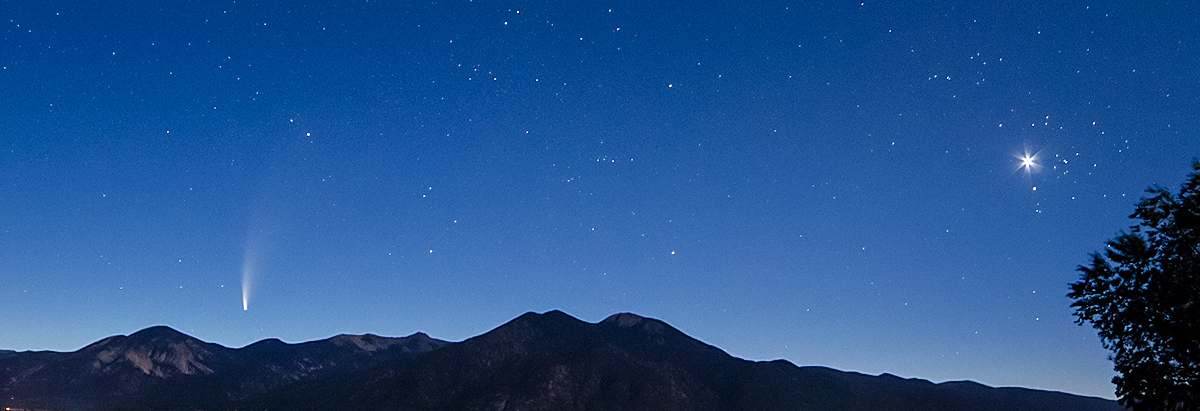
Welcome to taosastronomer.com!
offering
local "hands-on" observing
(visual and imaging) sessions and instruction
viewing and imaging from Rabbit Valley Observatory
a dark sky location on the mesa just west of Taos, NM
M101 Pinwheel Galaxy and adjacent deep sky objects -- informational page |
| From the fabulous (and free!) star chart website Cartes du Ciel emerges a general map of the Ursa Major and other northern circumpolar (these stars never set at our latitude) constellation area. This object-rich area has a large share of the visible galactic wonders, including M101 (centered) as well as M65, M66 and NGC3628 (our photographs from this website linked here), complex spiral galaxy M51/NGC5195 (linked here) and spectacular galactic pair M81 and M82 (our photos linked here) as well as many others. The recognizable "W" or "M" shape of Cassiopeia (on its side and to the left), the classic Big and Little Dippers (Ursa Major and Ursa Minor) as well as less obvious asterisms Draco, Cepheus, Canes Venatici and others make up this interesting region. Above, then, is a general star map -- note "alpha" Ursa Minor (the North Star, Polaris). More detailed maps and charts below. |
| From star chart website Cartes du Ciel now emerges a more detailed map of the deep-sky-object laden M101 area. More detailed charts, a Field of View (FOV) graphical estimate of my telescope and optical configuration, and my final resultant photograph of these objects appear below. |
| The above is a Field of View chart from AstroPlanner (I discuss the use of this excellent software on my visual observing page linked here) estimates just how much of M101 I can image with the indicated border lines, set to my camera's parameters. This sort of visual depiction allows the astrophotographer to determine whether or not the equipment matches up with the subject/object. I use this for most imaging now -- both for "fit" and for framing purposes. This visual aid, along with a photographic chart, will help to frame the subject. | This photograph, inverted and rotated from the linked web original, offers further detail to help describe this object-rich area . . . |
Here's my final effort for the Pinwheel Galaxy -- you can click here to link to larger versions of this image, both original horizontal and cropped -- the inverted chart to the left is spun to match my framing. Also please scroll down to review this photograph, enlarged and labeled to point out some of the features in my photograph. If you review it carefully you will "discover" even more deep sky objects; mostly galaxies of various types, and at divergent distances. Also worth noting is that within M101 itself are many additional star clusters and deep-sky objects (some visible here); recently a supernova was detected in one of its outer arms. |
|
|
|
[copyright Rabbit Valley Observatory/Willis Greiner, 2016 -- all rights reserved] |
(all content copyright 2015-2019 Willis Greiner Photography, all rights reserved)